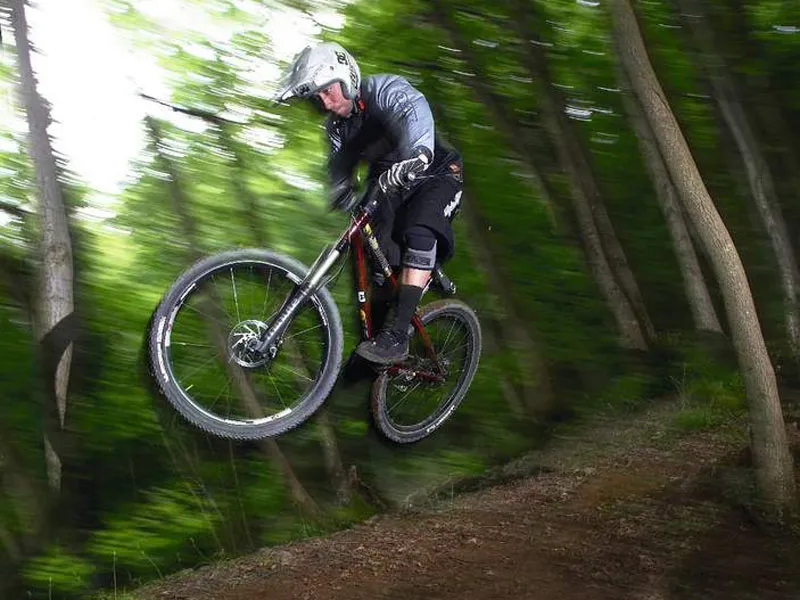Jumping’s not just for young thrashers – it’s a great skill for anyone to have out on the trail. If you want to learn to do it properly then you have to start on a hardtail, just like the pros…
Flying through the air isn’t just exhilarating, it’s actually a vital technique if you want to learn how to ride really fast. If you hit something and end up airborne, you’ll be able to control it safely and ride away, while your mates look on in astonishment.
Your local bike shop will tell you that many bikes they sell won’t qualify for warranty if you’ve been jumping them, but the fact is that if you know how to jump correctly, you’re unlikely to do any damage. It tends to be riders that can’t jump who break their bikes getting off the ground, so do the right thing for your bike and read on.
We visited a BMX track, where the jumps and shapes are very pronounced, and although you do find stuff like this out on the trails, it’s not nearly as obvious.
We won’t just be telling you how to get airborne though. There are other methods that can be used to ride over jumps while staying planted, which is obviously an important factor, because accidental air can end up being very painful…
The basics
Jumping can be an intimidating exercise at first, but there are various techniques you can try in order to flatten out the learning curve and give you more options on the trails.
Basic jumping
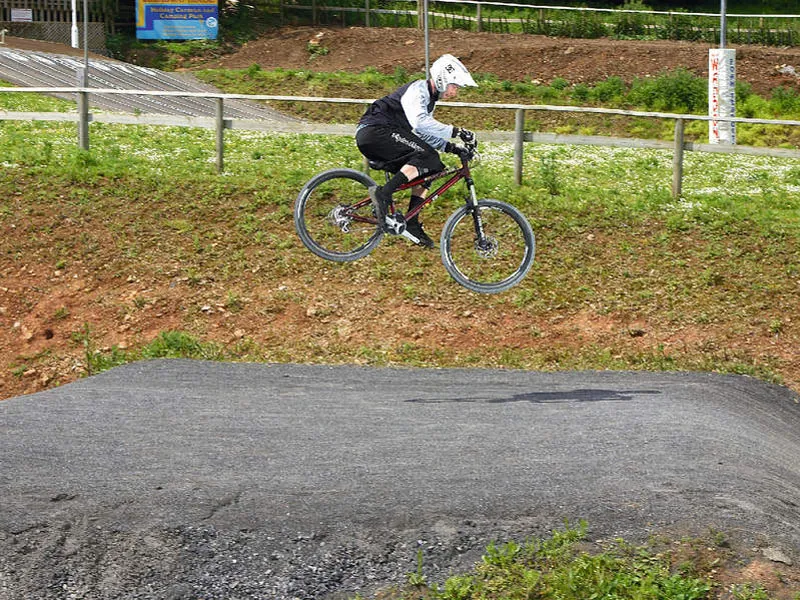
Just being in the air can be a scary thing, so you need to get used to the feeling of doing it. Tabletop jumps are ideal because you jump up on to them, which makes the landing smoother than jumping off something that’s too flat.
At first, approach the tabletop jump at a brisk speed and simply allow the bike to get airborne. Get used to moving your weight to control the bike in the air – ideally you want to be landing with both wheels together. Once you’re confident doing that, try to get a bit more height and, in turn, get faster – you’ll be able to work your way towards finishing on the landing ramp. You’ll know when you get it right, because it’ll feel silky smooth in comparison to landing on the top.
Pumping
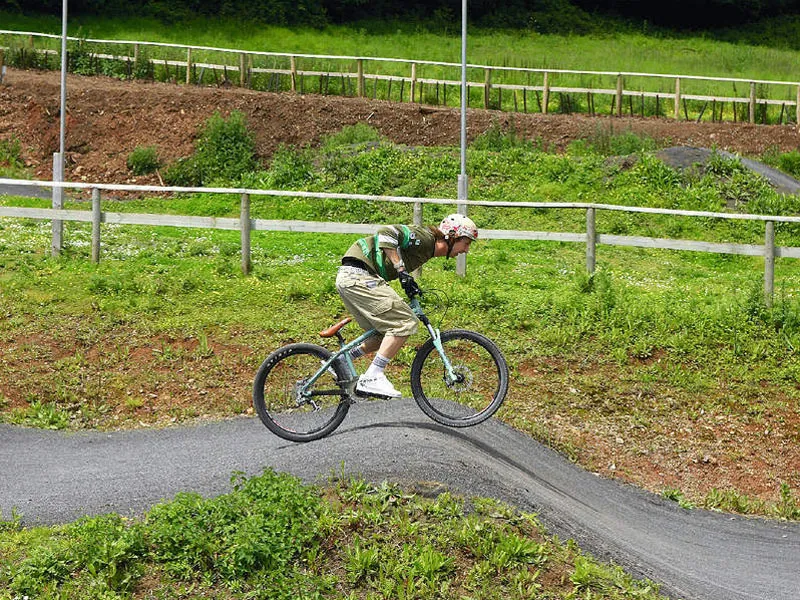
If you’re not going fast enough, or you’re simply not confident enough to clear a jump, then you need to master pumping. We’re using a double jump as the example. First, ride towards the jump at a brisk pace. As you approach the take-off, you need to absorb it – allow the handlebar to come up towards you. When the front wheel is at the top of the take-off, force it down on to the back side and allow your legs to relax like you did with your arms. Push your feet down to plant the rear wheel – doing this will also give you some extra pace.
Ride the landing ramp in the same way and really force the bike into the back side. This minimises the risk of your bike getting bucked around and also increases your speed.
Manualling
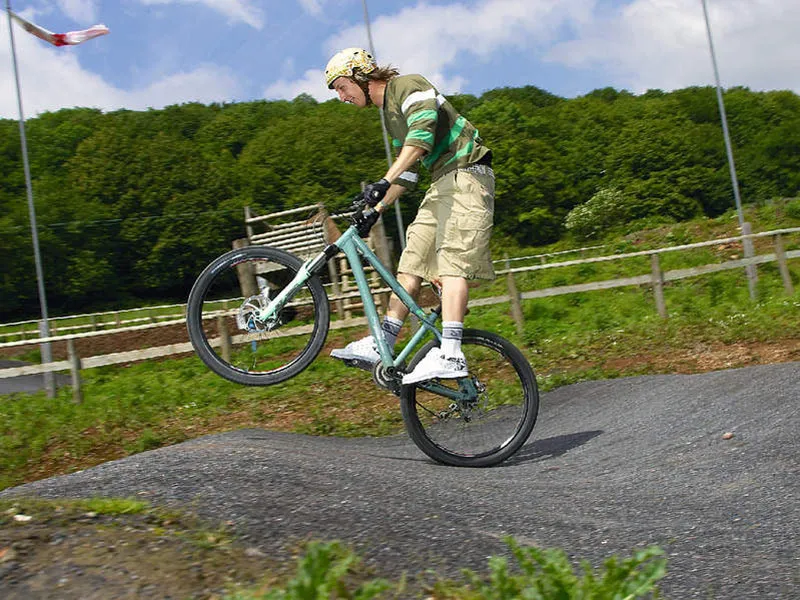
This is another way of staying on the ground and gaining speed, but manualling can be done at full speed as if you’re going to jump. You can grasp the principle at slow speed, but it’s best to learn it going fairly fast.
Ride towards the jump and allow the front wheel to get airborne, but as soon as it does, don’t ride with it. Instead, lean back slightly and push your feet down hard on to the back side. Doing this will bring the front end up, and should also bring you into a standing position high on the bike, like you see here.
Use this position to look for the back side of the landing, and when there, allow the front wheel to drop on to it. As it drops, push into the landing, as with pumping, and follow suit with your legs.
Pre-jumping
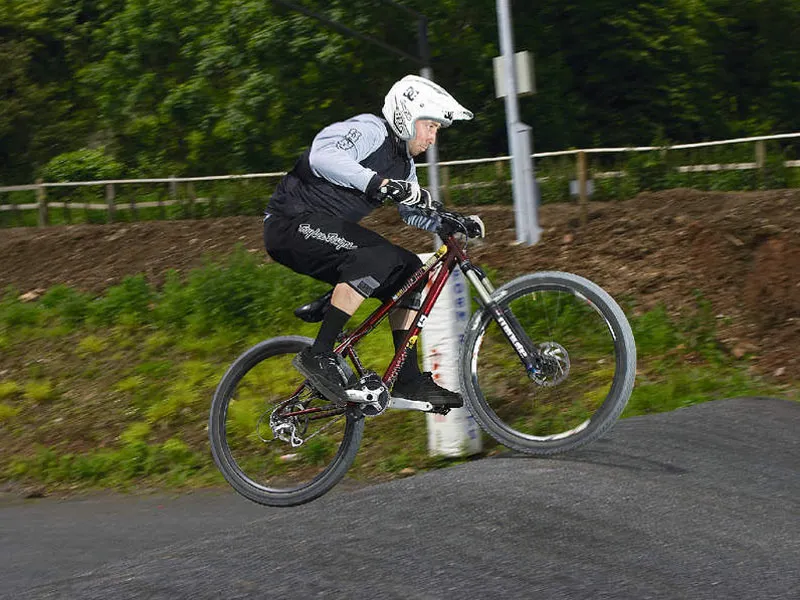
This is the ideal way of controlling how you stay on the ground rather than getting thrown into the air. It’s perfect if you’re not keen on jumping, or if you’re rattling down a trail and spot a potentially hazardous mound.
Approach the jump fairly quickly and, a few feet back from it (depending on how fast you’re travelling), pull a bunnyhop. You’re aiming to land on the back side of the jump. The effect this has is that you’re controlling your air time, rather than being thrown into the air and having to try to control it. This can be applied to jumps on the trail, steep banks and the back side of roots.
It’s an easy thing to learn but it’s hard to perfect. When you start doing this at speed, you need to learn to judge distances. A good way of doing this is going to a car park and practising landing on a white line. Increase your speed and hop from further back until you’ve mastered it.
Intermediate
Double jumps
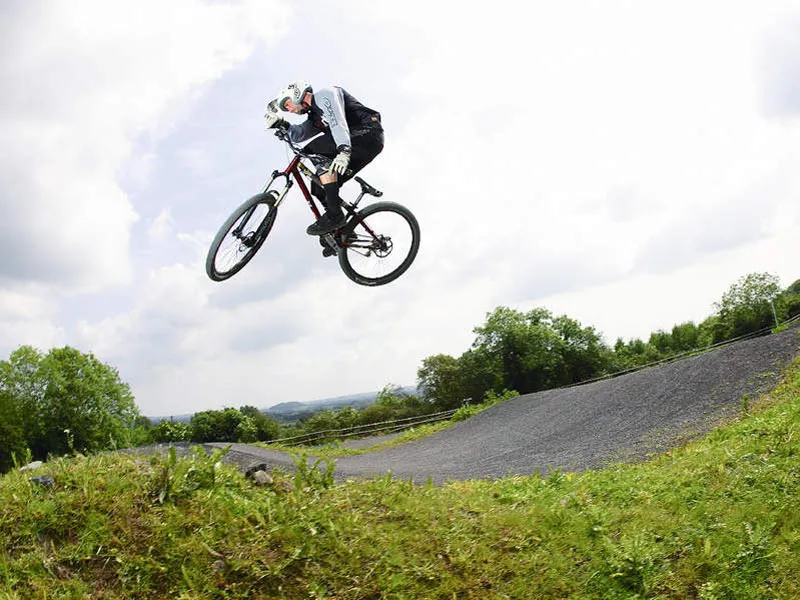
The obvious thing with jumping a double is that there isn’t much room for error, and you either make it or you don’t. Obviously, there are various nasty consequences of ‘not’ – broken bikes and even broken you…
Using a combination of the techniques from above, you need to size up the jump first, so ride at it and roll over it first, then go a bit faster and pump it. This should start to give you a rough indication of the speed necessary, so ride a fair bit faster now and use the manual to get through. The manual can be used at jumping pace, so it’s a good thing for you to get a feel of the speed.
The final thing you need to do is bite the bullet and commit – you won’t get anywhere just looking at it. Ride the jump at full speed until you do it.
Take-off

As you approach the jump, you need to give yourself a couple of bike lengths to get set up. Get out of the saddle with your favourite foot forward and prepare to push the bike into the take-off. You might find it easier to just have a few runs flat-out at the jump and brake before it to get an idea of where the landing is in relation to the take-off.
As the front wheel reaches the top of the take-off, spring upwards and pull up. As you do this, you’ll be taking the load off the rear end, ready for take-off.
In the air
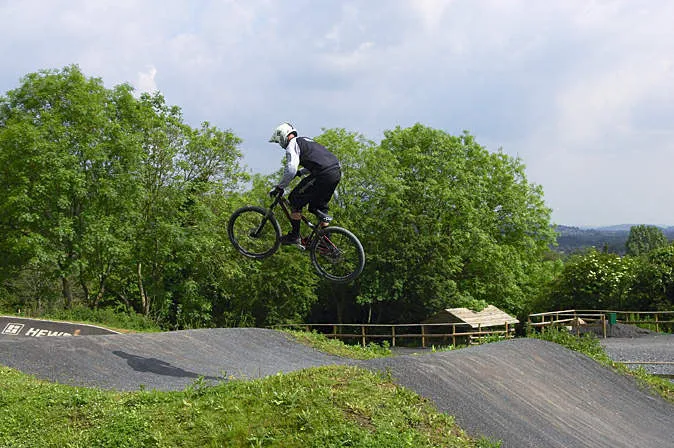
As the rear wheel leaves the take-off, you’ll need to let it come up underneath you in order for the bike to balance out. As it comes up, you should ideally be extending your arms and legs – this enables you to fully stand up on the bike and look into the landing.
You need to be cautious of weather conditions when jumping doubles, because crosswinds can throw you off-course and make you come up short.
At this point, you should be staring into the landing. Ideally, you want the front wheel to meet the top of the transition and the rear wheel to follow.
Landing

For the first few attempts, you should just concentrate on clearing the jump – if you can roll out of it OK, then it’s a good landing! Once you get confident with it, you should extend your arms to push the front wheel into the landing. As you do this, allow the rear wheel to come up between your legs slightly as the bike makes the shape to meet the transition.
Once the front wheel has met with terra firma, start pushing gently on the pedals to get the rear wheel moving in to follow. With any luck, you’ll have landed just fine.
Advanced
Squashing a jump

Being able to jump a double is one thing, but time in the air is time not on the ground gaining speed, so minimising your air time while still clearing the jump is the way to do it.
If you watch a pro hit a double jump at full speed, you’ll notice he or she almost mimics the shape of the jump while in the air. It’s an advanced manoeuvre and takes time to master, but once you have, you can hit jumps flat-out, knowing that you can control the bike and gain speed from it.
Instead of popping off the lip as you would to clear the jump, keep your body hovering over the bike as you take off, only allowing the bike to come up to you. As you take off, extend your arms and legs and raise yourself over the bike. Then lower yourself back to a hovering position and, using your arms and legs, push the bike into the landing as hard as you can to gain speed from the landing. Only practice will make perfect with this technique…
